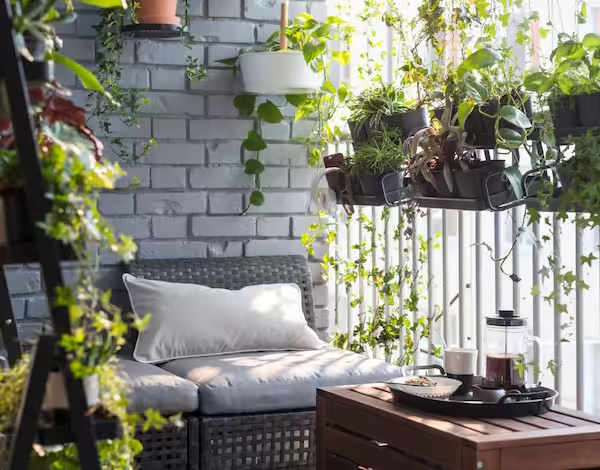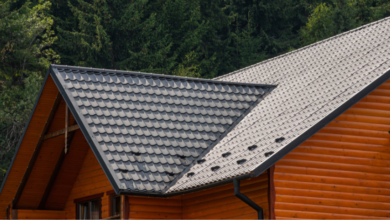How to Install Hanging Pots on Your Balcony Safely

Bringing more green into your balcony is a great way to improve the quality of your living space, and the hanging pots for the balcony are perfect for city dwellers. They optimize the vertical space, and you can grow flowers, herbs, and even vegetables without occupying much floor space. Nonetheless, the use of hanging pots is slightly complex and needs proper planning and manner in which they are hanged to ensure that they are safe and last long. Here’s a complete guide to putting the hanging pots on your balcony in a safe manner.
Assess Your Balcony Structure
First, you need to evaluate the condition of the structure of your balcony. Consider the material of your ceiling or railing on which you wish to place the pots. The most frequent materials are wood, metal, and concrete. All three demand different approaches and methods. Check that the new load can be added without compromising on the structural integrity of the building.
Select the Appropriate Hanging Pots
Choose pots that can be hung. They are available in different sizes, materials, and designs. This is especially important for balconies and similar structures, as lightweight materials – for instance, plastic or fibreglass – do not exert as much pressure on your support structure. It is important to provide good drainage for the pots to prevent water logging that will make the plants weak and compromise the balconies strength in the long run.
Collect Required Resources
When using hanging pots for the balcony, it is important to note that different kinds of balconies and pots require different tools. Commonly required items include:
- Drill (with masonry bits for concrete or metal bits for metal surfaces)
- S-hooks or ceiling hooks
- Fasteners such as anchors or wall plugs (for extra holding force in concrete or drywall)
- Carabiners (for more secure suspension and convenient removal)
- Chains or ropes (capable of holding the pots firmly)
Determine the Hanging Locations
Determine where the pots should be placed or hanged. Make sure they get enough sunlight and are easily reachable for watering and other care. One must always remember the weight distribution in order not to overwhelm one region more than the other. Ensure adequate space between the pots to allow room for the plants to develop without overcrowding.
Install the Hooks
For Wooden Ceilings or Beams:
Mark the Spot: Take a piece of pencil and draw where each hook will go to avoid puncturing ugly holes.
Drill a Pilot Hole: Drill a small pilot hole through the piece where the screw is to be inserted so ease insertion and accuracy is achieved.
Insert the Hook: You may screw in the hook by hand or tighten it with a screwdriver until the hook lies flat against the counter.
For Concrete or Brick:
Mark the Spot: Draw a circle around a point with a pencil or a marker that indicates drilling points.
Drill Holes: Hammer drill and a masonry bit are required for the applications that need to be made on the concrete or brick surface.
Insert Anchors: In case a more secure hold is needed, wall plugs or anchors should be inserted in the holes created by the drill.
Install the Hook: Tighten a screw on each arm of the hook for better focus on the anchor.
Attach Chains or Ropes
Connect the chain or ropes to the hooks. Make sure that they are well anchored to the structure and able to support the weight of the containers. If chains will be employed, then it is advised that they should be made of material that does not easily corrode from weathering.
Hang the Pots
Hang the other part of the chains or ropes to hook the pots. To further reinforcement, some people choose to tie the pots with carabiners, so it can facilitate the removal when watering or handling the plants. Every pot that you hang must be placed at a level so that there is no spilling of the soil and water on the floor.
Kyari’s Hanging Pots
While a hanging pot for the balcony would improve the aesthetics of the house, it is important to choose that kind of designer or even plain pots that will elevate the looks of the balcony. From magnetic designer pots to railing planters and more, Kyari’s hanging pots for the balcony or any part of the house is a must try for pots are a must try for everyone who are fond of gardening.
Watering and Maintenance Tips
Water Regularly: Ground pots on the other hand are known to take a longer time than hanging pots because they retain moisture for longer. Inspect the soil and make sure to water the plants often if the soil is dry.
Fertilise Appropriately: For feeding, you can use an N-P-K fertiliser which is in balanced proportions and is soluble in water. Do not hot house the plants as this is dangerous to the plants and always avoid over feeding the plants.
Inspect Hooks and Chains: To ensure the safety of the Iterate chute, it is important to frequently conduct inspection on the hooks and chains to identify areas that may require replacement due to wear and tear. Summing up, all damaged components should be replaced as soon as possible to minimise the risk of an accident.
Prune and Deadhead: These plants should be pruned to get rid of the dead leaves or flowers that hinder the plant from growing since it will allow room to grow.
Consider Safety and Aesthetics
Make sure the hanging pots do not interfere with traffic or become a tripping hazard. These pots should then be arranged neatly to increase the beauty of the entire arrangement. Select different types of plants as well as balance different colours to make the balcony garden as lovely as possible.
Plant hangers are a great DIY idea that enriches the interior with the presence of nature right on the balcony. With the above steps in mind, one can develop a safe, aesthetic, and environmentally friendly balcony garden. Safety should always come first ensure you choose the right material to ensure you grow your garden without risking the structure of your balcony.Read more

